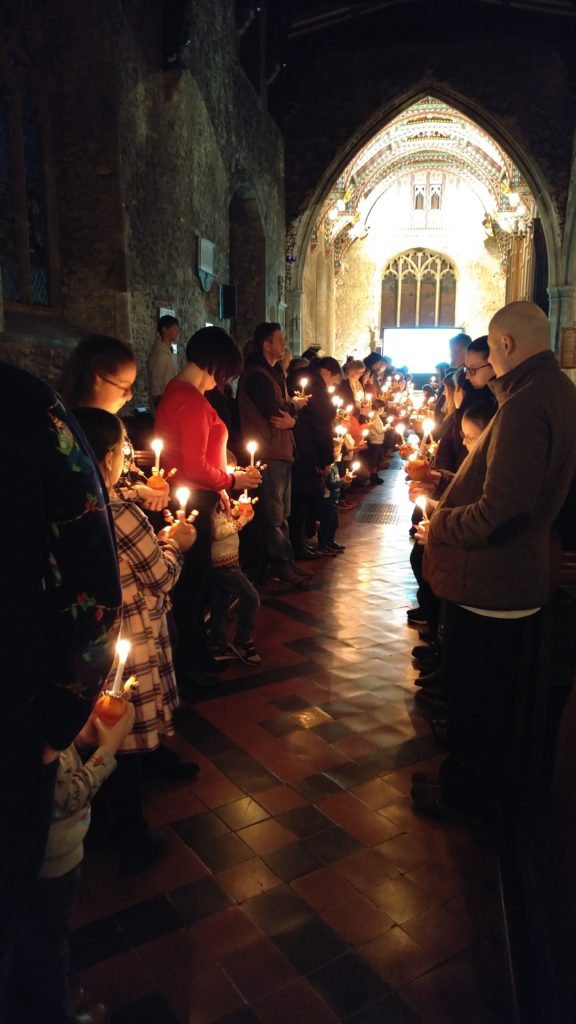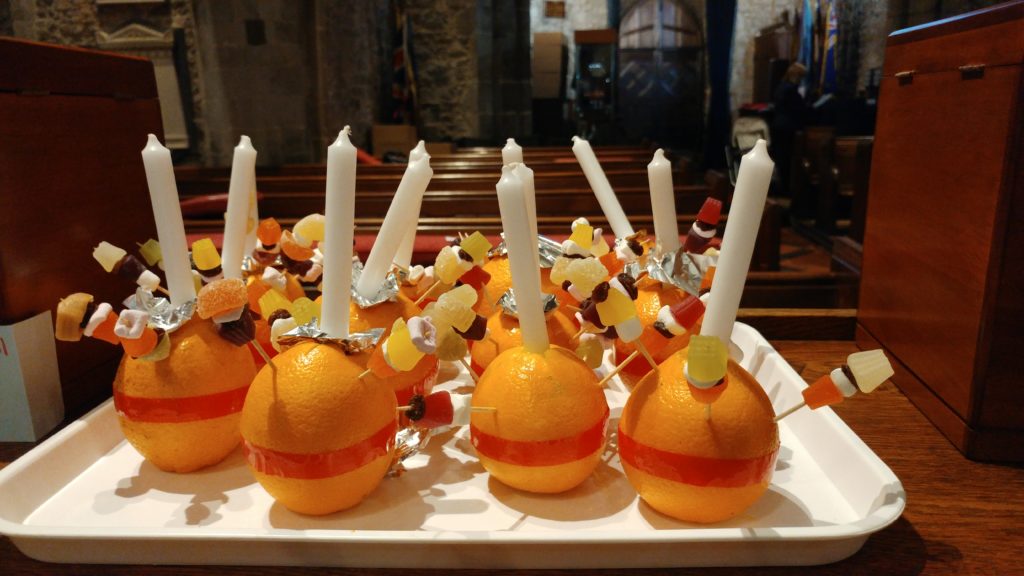
It seems like it was yesterday. First, the Christingles service for the children from St. Mary’s Primary School and later for those who have wanted to come to celebrate in our church. Parents, children, grandparents and people of all ages have enjoyed the service. We remember that the church is more packed at this service than at almost all the other services. The welcomers, with smiling faces, giving the Christingles to each person, the happiness of the families being together, the impatient children wanting to eat the sweet from the sticks stuck in the orange. Carols, readings, a few word shared about the joy of Christmas and, close to the end, the lighting of the candle in orange. The dark of the church created a mystery atmosphere, broken by the small beam of the blaze of the candles, projecting dancing shadows on the church’s walls. And for the majority of those presents at the service, this was their only service for Christmas.
The Christingles are not Christmas, but Christmas gives meaning to Christingles.
John de Wateville, a leader of the Moravian Church in Germany, in 1747, started this service. He gave to the children a lighted candle with a red ribbon around it. This represented Jesus being the light of the world. Over the decades, the symbolism of the Christingles has been enriched to what we have today: the orange which represents the world; the candles are the symbol of the love of God come to us trough Jesus; the ribbon is the symbol of the blood of Jesus shed for us by love; the four sticks symbolise all the seasons and corners of the Earth; the fruits and the sweets represent the fruits of the earth grown by God’s love for us.
When we celebrating Christingles, we are invited to remember God’s love, to remember Jesus, the child from the manger.
In the Old Testament we can find a red line crossing the whole history of Israel: if in the present generation we are suffering, the next one could be the generation bringing to our nation the blessing of our God. Isaiah gave voice to this belief: “For to us a child is born, to us a son is given, and the government will be on his shoulders. And he will be called Wonderful Counsellor, Mighty God, Everlasting Father, Prince of Peace” (Isaiah 9:6). In all her history, the nation of Israel believed that one of the children of the future times will be Messiah, the Saviour, the good King, God’s presence in her midst. The little child in the manger, Jesus, celebrated on Christmas time, is this waited child. In him is the hope of the Old Testament.
In celebrating Jesus as our hope and Saviour we celebrating every single child of the world: they are the hope of their family, nations, the future of the humanity. We have to think about them. Many of them are in poverty, in wars’ zone, are migrating, are ill, have nobody to care for them. Caring for them we care for our future. We are invited to help them, their family.

Jesus is the sign of love of God the Father for us, for the world. Every single child is a small sign of love and a hope for a better future. In the Christmas time, we are invited not to forget them and to help as much as we can those children in need, any kind of need.
Christingles, in our time, is about that: God gave us his love trough Jesus and he continues to bless us trough every single child born in the world. Where there are children there is hope. That community has a future. Jesus’ coming in the world restored the hope of the world: God didn’t leave us on our own. He is with us. This is Christmas and this is what we have to share: receiving love we have to give love. Celebrating Christingles we continue to share love, to invite people to do the same with the children of the world: to share love on all its form to help them.
(Article written for St. Mary’s Church’s Magazine, Prittlewell, February/March 2020)
